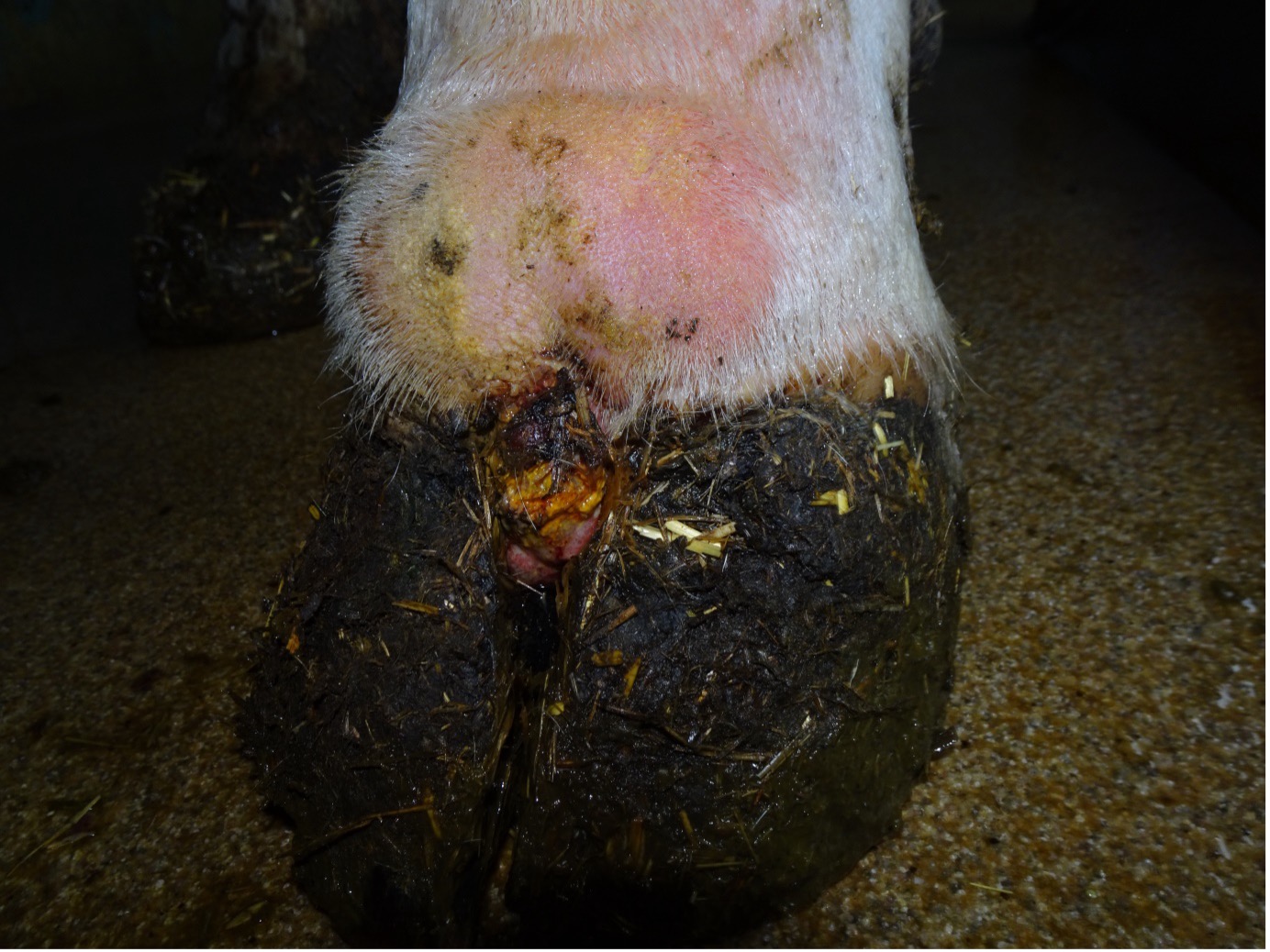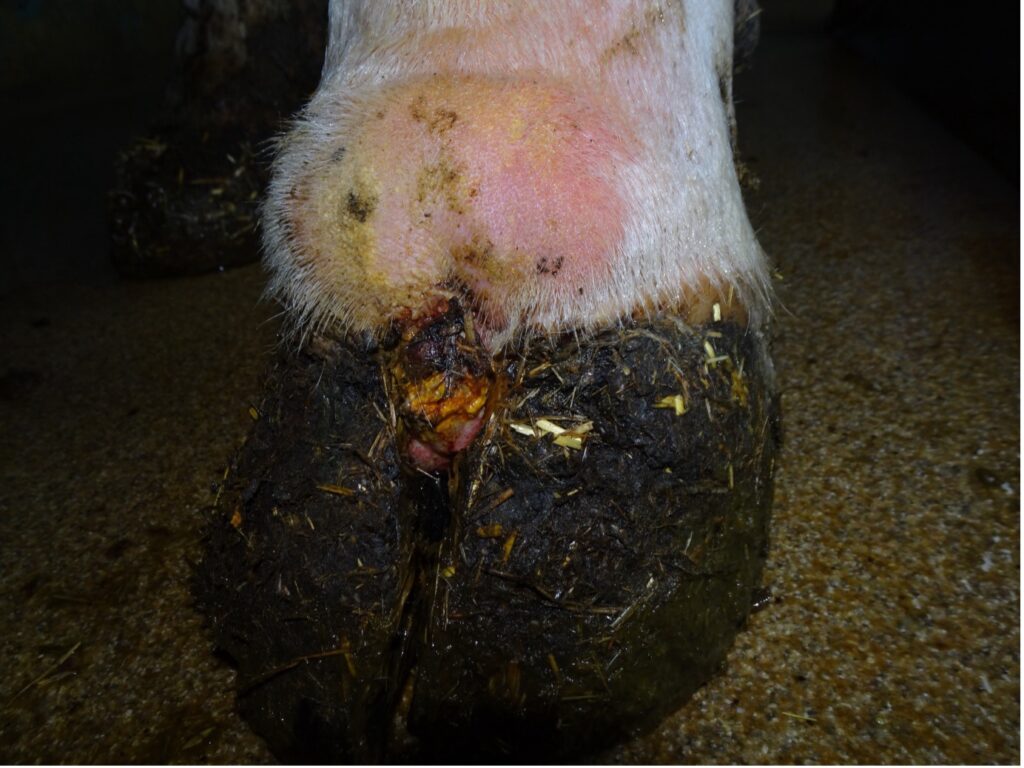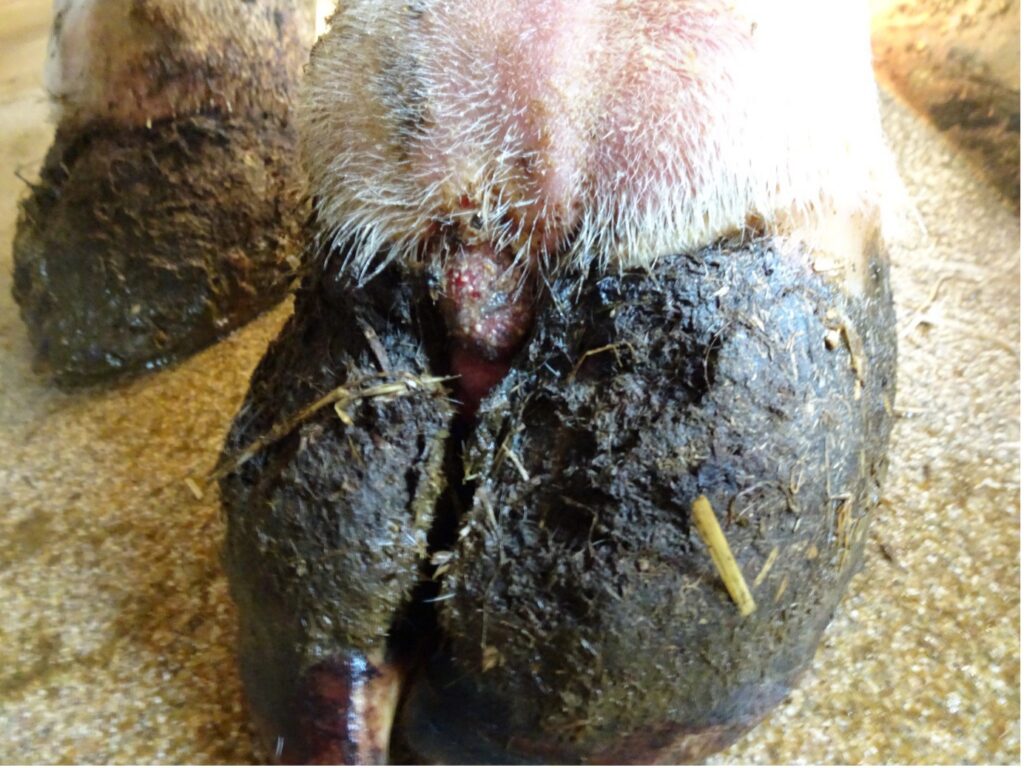Case Study: Successfully Treating Digital Dermatitis with Sanocyn forte
Digital dermatitis (Mortellaro’s disease) is a painful and contagious claw disease that causes significant economic losses in cattle herds. The disease manifests as inflamed, reddened, and swollen skin, typically in the interdigital space. Lesions are often open, oozing, and surrounded by necrotic tissue.
Etiology and Pathogenesis
The exact cause of Mortellaro’s disease is complex and multifactorial. Various bacteria are involved, particularly Treponema spp., but also others like Dichelobacter nodosus, Porphyromonas levii, Fusobacterium necrophorum. Moist and hygienically inadequate housing conditions promote the development and spread of the disease.

Case Description
We would like to present a case in which we successfully treated Mortellaro’s disease in a cow with Sanocyn forte.
- Cow: 7952 Kula
- Diagnosis: Digital Dermatitis (Mortellaro’s disease)
- Findings: The left hind claw was severely affected. The lesion was inflamed, reddened, swollen, and showed necrotic tissue (see pictures).
- Treatment: Twice-daily spraying with Sanocyn forte solution.
- Course:
- Treatment Start: 21.07.2024
- Treatment Progress: 22.08.2024 – Significant improvement of the lesion.
- Reduction of swelling and healing of the lesion.
Result: Significant improvement of the clinical picture, reduction of inflammation, and healing of the lesion. The cow showed improved lameness and increased well-being.


Discussion
This case study demonstrates the potential of Sanocyn forte in the treatment of Mortellaro’s disease. The antimicrobial and wound-healing properties of Sanocyn forte support tissue regeneration and combat the bacteria involved. Early treatment and optimization of housing conditions are crucial for treatment success.
Conclusion
Sanocyn forte can be a valuable addition to the treatment of Mortellaro’s disease. We recommend using Sanocyn forte in combination with good housing conditions and early diagnosis for best possible results.
Weitere Beiträge für Sie: Hautpilz Katze, Juckreiz Hund, Hund Pilz im Ohr
